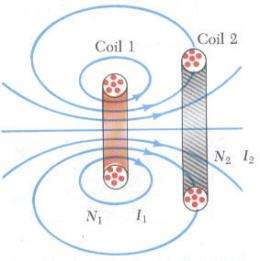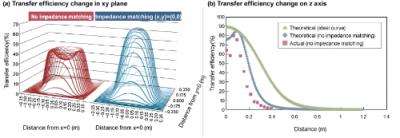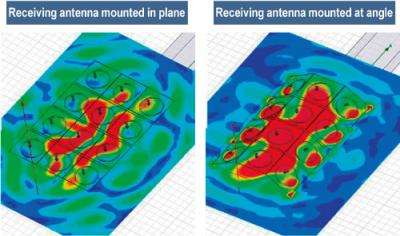May 13, 2010 weblog
Wireless Power Supplies Using Magnetic Resonance

(PhysOrg.com) -- Until now domestic manufacturers and research institutions have only been focused on the concept that magnetic resonance could be used for wireless power supplies. Companies like Sony Corp. and Toshiba Corp. of Japan have worked out details on extending the range of this technology toward practical applications. University of Tokyo of Japan and Kyoto University of Japan has clearly aimed this technology for practical wireless power supply applications.
In 2007 MIT research team outlined a public experiment (see diagram below) where they used magnetic resonance to light up a 60 watt bulb. The coil operated at a frequency of approximately 10 MHz, with a Q factor of 950. The Q factor of a coil is determined by (2πf)L / R, where f= frequency, L =coil inductance and R=coil resistance. A Q factor greater than 1000 is difficult to achieve.

A magnetic resonance wireless power supply system was discussed in one paper that’s prototyped by the Arakawa & Komurasaki Laboratory of the University of Tokyo together with DENSO Corp. of Japan. Professor Kimiya Komurasaki of the Department of Advanced Energy, Graduate School of Frontier Science at the University, stated: "The system can supply power not only to mobile phones and notebook PCs, but also objects moving freely in free space."
With the prototype system researchers studied the relationship of the resonator’s position within three-dimensional space to transfer efficiency. Both simulated and actual measurements are shown in figure below.
In order to achieve optimal power transfer, impedance matching between coils is a key factor. By changing the distance between the transmitter and receiver causes a change in the coupling constant (K) which causes a change in the optimal impedance ratio.

The research team aims at boosting transfer efficiency while also including a set of applications that requires less efficiency. For example, a wireless power supply used to power a mobile device would require less efficiency as compared to a large screen TV that requires high efficiency coupling.
Microwave Transmission
Besides magnetic resonance, wireless power supplies can also be designed using microwaves. This method was demonstrated at the Institute of Electronics, Information and Communication Engineers (IEICE) 2010 General Conference held March 16-19, 2010.
Naoki Shinohara, Associate Professor, Research Institute for Sustainable Humanosphere, Kyoto University stated that, "microwave transfer is not at all a low-efficiency technology."
Optimization of antenna positioning can effectively boost efficiency as illustrate in the diagram below. A 12 piece receiving patch mounted in plane was about 60% efficient; whereas an 8-piece receiving patch antenna mounted at an angle, boosted simulated transfer efficiency to 83.7%.

More information:
Wireless power transmission system for a Micro Aerial Vehicle - ursi-test.intec.ugent.be/files … 8/papers/HBDGJp7.pdf
Via: Tech-On
© 2010 PhysOrg.com



















